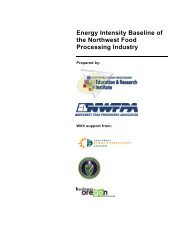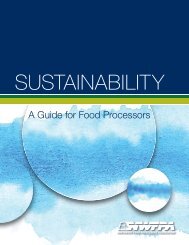Create successful ePaper yourself
Turn your PDF publications into a flip-book with our unique Google optimized e-Paper software.
Background information<br />
Issue addressed in the study<br />
Several large-scale urine biomonitoring studies have consistently demonstrated that human exposure<br />
to BPA, from all sources, is extremely low with typical intake in the range of 25-50 nanograms/kg<br />
bodyweight/day. These levels are more than 1,000 times below the safe intake limit (tolerable daily<br />
intake, TDI) set by the European Food Safety Authority EFSA. Other studies, including several<br />
controlled human volunteer studies, have shown that BPA is efficiently metabolized and rapidly<br />
excreted in urine. Taken together, these studies provide a consistent and coherent understanding of<br />
human exposure and metabolism.<br />
In contrast, a number of smaller scale studies have reported significant levels of free (unmetabolized)<br />
BPA in human blood. The levels reported are highly inconsistent with what is known about human<br />
exposure and metabolism from the studies mentioned above. In addition, the validity of the data in<br />
these blood biomonitoring studies is uncertain since other studies have suggested that sample<br />
contamination may be a significant problem in trace level BPA analyses. Nevertheless, these studies<br />
are used as evidence that people are exposed to high levels of BPA, with some claims that human<br />
exposure is even higher than the TDI.<br />
It was an objective of the Teeguarden-research team to contribute to understanding which of these<br />
two sets of study data is valid.<br />
What was done?<br />
In the study, 20 human volunteers ate 3 meals in a day that were enriched in canned foods and<br />
beverages to ensure that the participants were exposed to BPA. Based on how much total BPA was<br />
found in urine, it was determined that the average exposure for all participants was 21% greater than<br />
the 95 th percentile exposure determined by CDC’s population-scale urine biomonitoring data.<br />
Blood and urine samples were collected from each participant hourly during the day of the study. The<br />
blood samples were analyzed for both free BPA and total BPA, while urine samples were analyzed for<br />
total BPA (previous data has shown that free BPA is not commonly found in urine), all with a sensitive<br />
analytical method. This comprehensive set of data allows for a detailed analysis of the<br />
pharmacokinetics of BPA.<br />
Key Results<br />
Total BPA was detected in only 14% of the 320 blood samples, only one of which was above 1 ppb.<br />
Total BPA was below the sensitive limit of detection (0.3 ppb) for 86% of the samples.<br />
Importantly, free BPA was below the limit of detection in all 320 blood samples analyzed by the CDC<br />
lab, even for samples with detectable total BPA. Based on their results the authors note that reported<br />
high levels of BPA in blood are unlikely to be valid: “Furthermore, the current results obtained using<br />
analytical methodology 10-45 times more sensitive than the previous human study by Voelkel et al.<br />
suggest that reported BPA concentrations in human blood of 1.4-19.2 nM [~0.3-4.4 ppb] (Vandenberg,<br />
Chahoud et al. 2010) are highly unlikely in the general population exposed orally to amounts as much<br />
as ~4 times greater than the 95 th upper percentile of aggregate exposure in the general U.S.<br />
population.”<br />
ASSOCIATION OF PLASTICS MANUFACTURERS IN EUROPE AISBL<br />
Avenue E. Van Nieuwenhuyse 4/3 - B -1160 Brussels - Belgium<br />
Tel (32-2) 675 32 97 - Fax (32-2) 675 39 35<br />
VAT BE 416 155 338 - WWW.PLASTICSEUROPE.ORG<br />
2/3

















